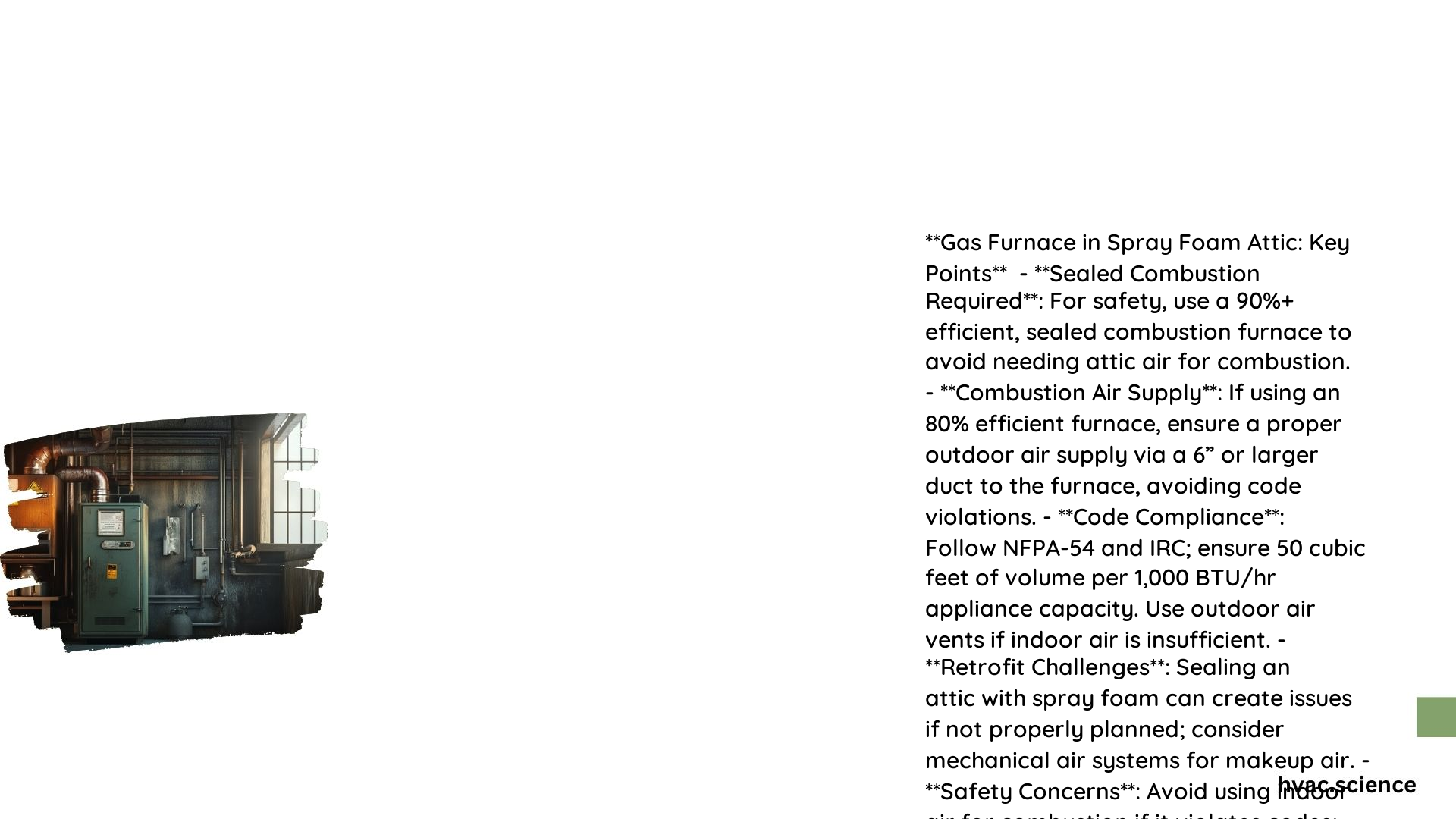Installing a gas furnace in a spray foam-insulated attic without proper ventilation poses significant safety risks, primarily related to combustion air and the potential for carbon monoxide (CO) buildup. This comprehensive guide will address the key considerations and necessary modifications to ensure the safe operation of a gas furnace in a spray foam attic.
What are the Safety Considerations and Risks?
1. How does Combustion Air Requirement affect the Gas Furnace in Spray Foam Attic?
Gas furnaces need adequate combustion air to operate safely. In a sealed attic, the furnace may not receive enough air for proper combustion, leading to incomplete combustion and the production of carbon monoxide. Atmospheric combustion furnaces, which draw air from the surrounding space, are particularly problematic in sealed attics because they can backdraft CO into the living space.
2. What is the Carbon Monoxide Risk in a Spray Foam Attic with a Gas Furnace?
Inadequate combustion air can cause the furnace to produce higher levels of CO, which is a deadly gas. This risk is exacerbated in sealed spaces where CO can accumulate, posing a serious threat to the building occupants.
3. What is Backdrafting and how does it affect the Gas Furnace in Spray Foam Attic?
If the attic is sealed and there is not enough combustion air, the furnace can backdraft, pulling CO and other combustion byproducts into the living space, creating a dangerous situation.
What are the Necessary Modifications?

1. How can a Sealed Combustion Furnace address the issues in a Spray Foam Attic?
The safest option is to use a sealed combustion furnace, which has a dedicated intake for combustion air and a separate exhaust. These furnaces do not rely on the attic space for combustion air, making them a safer choice for a spray foam-insulated attic.
2. How can an External Combustion Air Supply help in a Spray Foam Attic?
If a sealed combustion furnace is not feasible, you must provide a dedicated external combustion air supply to the furnace. This involves installing a duct that brings in fresh air from outside directly to the furnace, ensuring it meets code requirements for size and installation.
3. What are the Proper Duct Installation requirements for a Gas Furnace in Spray Foam Attic?
The duct must be installed correctly, ensuring it is not kinked or restricted, and that it provides a direct path for combustion air to the furnace. The duct should be of adequate size (typically 6-8 inches in diameter) and made of rigid metal to ensure proper airflow.
4. What Monitoring and Safety Measures are necessary for a Gas Furnace in Spray Foam Attic?
Even with proper modifications, it is crucial to install low-level carbon monoxide monitors to ensure the safety of the building occupants. This will provide an early warning system in case of any CO buildup.
Technical Details and Costs
What are the Duct Size and Material requirements for a Gas Furnace in Spray Foam Attic?
The duct should be at least 6 inches in diameter and made of rigid metal to ensure adequate airflow. This can add to the cost, but it is essential for safety.
How to ensure Code Compliance for a Gas Furnace in Spray Foam Attic?
The installation must comply with local building codes and standards for combustion air supply. This may involve consulting with an HVAC contractor and ensuring the ducting meets specific requirements.
What are the Cost Considerations for a Gas Furnace in Spray Foam Attic?
The cost of installing a sealed combustion furnace or providing an external combustion air supply can be significant. However, it is a necessary investment to ensure safety. The exact cost will depend on the specific requirements of the installation and local labor rates.
Reference:
1. Reddit Discussion on Gas Furnace in Spray Foam Attic
2. HVAC Talk Forum on Combustion Air Requirements
3. Spray Foam Magazine Forum on HVAC in Spray Foam Attic
